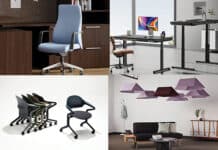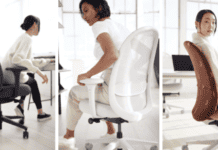By Seth DeForest
Published in the October 2006 issue of Today’s Facility Manager
Ever lease or buy a high end luxury vehicle? If not, drop by a local showroom. More than likely, the event will convey a new understanding of professionalism and customer service. This is because the luxury car shopping experience does not end with the sale of the vehicle. It extends well through the warranty, leasing, and payment processes, which are typically among the best in the business.
So, here’s the question. When will the office furniture marketplace learn from the high end auto industry and provide buying and leasing options that benefit end users as well as facility managers? Both industries sell sophisticated assets and spend millions in developing design, performance, ergonomics, and materials. But the car industry delivers a far better product—from assets to options.
When customers walk into nearly any of today’s reputable, upscale car dealers, they can choose from new or used assets while deciding upon a wide variety of leasing and buying options. New or used, for sale or for lease, all vehicles will be offered with warranties andoptions designed to make the customer walk out of the dealership with keys in hand.
But after walking into an office furniture dealership, buyers of all types (including facility managers) are likely to be hit with well worn lead times in addition to value propositions from the same manufacturer with a proposal to buy. Then, and only if the price isn’t agreed upon, will an option to lease be presented. But if the word“used” is mentioned (“Certified Pre-owned” has not yet entered the lexicon in this area), a mad scramble will immediately ensue that includes finding the desired office furniture from a wholesaler willing to cut a deal with the original salesperson.
Wouldn’t it be nice to find a furniture dealer that provides a variety of intriguing, clever, and cost saving furniture solutions and options? Why should it be any different?
Most car manufacturers respect their dealer’s right to make money—which doesn’t necessarily mean selling only new cars. They know that selling used vehicles is slightly risky, but it is still mostly profitable if done right. They accept the fact that a used luxury car on the road is market share, and the owner will hopefully love the experience enough to buy a new one when he or she can afford it.
In leasing more vehicles and then reclaiming them at lease expirations, dealers have also created a new, enhanced revenue stream fueled by the extremely profitable, certified pre-owned and sub-prime markets. This is an exceptionally heady move that comes at a time when market share for the Big Three has declined, and drastic economic measures are being considered. (Just last month, Ford Motor Company announced drastic cost cutting measures after trimming 4,000 jobs earlier this year.)
To the general detriment of end users and facility managers, the top five office furniture manufacturers have been slow to follow the same sales and leasing patterns adopted by the auto industry. This is also ironic, since both Michigan-based industries have similar histories and roots.
In the late 1960s and early 1970s, changing import rules and fuel shortages combined with stagnant innovation began to shake up the American auto industry. At the same time, the office furniture industry was having its own reinvention.
This market exploded in 1968 when the world’s first panel based system, Action Office, was unveiled by Herman Miller of Zeeland, MI. Shortly thereafter, Steelcase, Knoll, and Haworth soon followed suit. Instead of building around individual pieces, component systems could adapt to an ongoing series of aesthetic and functional business office needs. With this flexibility, facility managers could easily upgrade their company’s infrastructure to accommodate corporate moves, growth spurts, or even downsizings.
Eventually, a new entrepreneur emerged alongside the commercial office furniture industry—one that would refurbish everything from cubicles and chairs to work stations and desks and sell the updated furnishings for half the cost. Furniture manufacturers responded by examining their ability to sell against their own refurbished systems.
For years, a major sales point for new furniture was the quality of construction and longevity of the asset. Naturally, original furniture manufacturers wouldn’t claim their products were badly designed or poorly built.
Capitalizing on this conflict, disreputable suppliers went to work. Some brokers demeaned the industry and incited buyer distrust by employing a series of dishonest strategies that commonly included bait and switch tactics. In response, legitimate manufacturers and dealers warned consumers against the dangers of dealing with unsavory suppliers of used furniture.
Fortunately, the appeal of significant savings (sometimes as much as 50%) coupled with honorable used suppliers kept enough customers interested and eventually gained their loyal support. The result has been the evolution of full service dealers that can now offer an impressive range of services and high quality merchandise.
Today, “pre-owned” furniture dealers commonly operate as alternative sources to local suppliers of new product. Some dealers are even following the lead of the auto industry by developing more sophisticated buying options for the consumer. This may translate into offering expert advice, 24-month leases with upgrade options, and special value for trade in of product.
For many years, facility managers have wondered why they couldn’thave it all in relation to office furniture. Well, now they can, aslong as they are able to optimize the value of current office furnitureand negotiate the very best deal. Here are some tips on how to accomplish these goals.
- Before purchasing furniture assets, have the dealer estimate its residual market value after two, three, four, and even five years. The same should also be done with existing furniture before trade ins. This information will help project furniture, fixtures, and equipment (FF&E) decisions.
- Carefully review the dealer’s written service agreement while scheduling annual visits to maintain furniture assets. Good service agreements are designed to protect the furniture’s residual value and the customer’s return on investment.
- Carefully review all the available purchasing and leasing options with the dealer. Leasing options such as fair market value leases, asset based lending, or fixed price purchases all provide different benefits.
- Select a dealer that understands the import and used markets.These options offer numerous cost saving opportunities without sacrificing quality.
- Thoroughly evaluate the dealer’s ability to refurbish, store, and manage assets. The long-term cost savings of working with a dealer thatoffers all of these capabilities can help save a great deal of money over the life of the asset.
For some furniture customers, the purchasing mission isn’t easy because of the myriad of options. Still, thanks to incentives offered by some pre-owned resellers, it is possible for facility professionals to make fiscally responsible decisions about the pros and cons of all types of furniture, including new, imported, and used.
DeForest is president of Sewell, NJ-based Boomerang USA, apre-owned office furniture reseller determined to recirculate tons of office furniture discarded annually throughout the U.S. Questions aboutthis article can be sent to seth@boomerangusa.com.




















![[VIDEO] Collect Asset Data at the Speed of Walking a Building](https://facilityexecutive.com/wp-content/uploads/2024/02/maxresdefault-324x160.jpg)